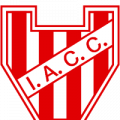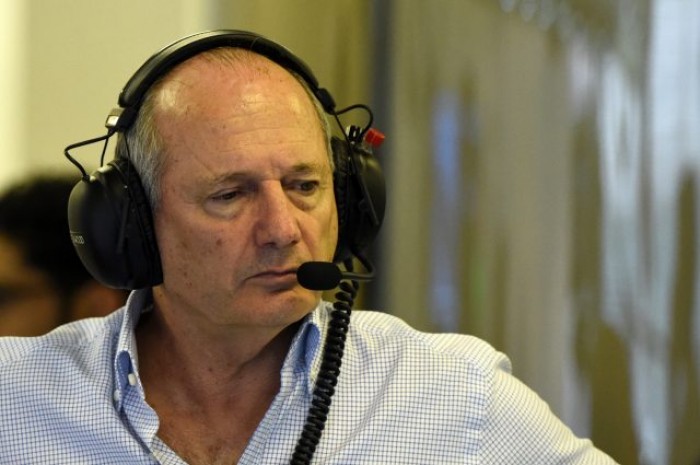In January 2014, Ron Dennis announced McLaren team principal Martin Whitmarsh had been removed from his post and that he was taking up the position of Group CEO, handing himself effective control back of the Formula One team.
After he had stepped down at the beginning of 2009, having seen Lewis Hamilton claim the title in 2008, trusted right-hand man Whitmarsh was placed in charge. However, five years of underperformance on track led to Whitmarsh's dismissal and hopes that McLaren would rise again under the man who had overseen one of the most dominant teams in Formula One history. Sadly, though history wasn't go to repeat itself.
The news that, after 35 years involved in McLaren, Dennis was being put on gardening leave after a failed takeover attempt, involving Chinese investors, was not unexpected but would sting the man who saved the team from the douldrums.
Vavel takes a look back at the history of Ron and McLaren and the legacy he will leave when he severs ties as CEO in January.
Laying the foundations
Dennis first arrived in Formula One 50 years ago, at the Mexican Grand Prix as a mechanic for Cooper. After a move to Brabham and the retirement of Sir Jack in 1970, along with trusted friend Neil Trundle, he decided to take the plunge and move into management.
.JPG)
During the 1970's the Rondel team was very successful in Formula 2 and other junior formulae, before a move into F1 was sccupered by the Oil crisis. Not giving up on his dream, Dennis founded Project 4 Racing and had continued success in the lower ranks and in touring cars, before in September 1980, the call came from bosses at Phillip Morris, who wanted to take over Dennis's outfit, but in effect handed control of the championship-winning team to the Woking native.
After James Hunt had won the 1976 title, McLaren were undergoing a significant slump and had one of their worst seasons in 1980. For 1981, Dennis hired renowed designer John Barnard, who came up with the first carbon-fibre monocoque, the McLaren MP4-1.
Equally as important was getting an exlusive engine supply as the Turbo era really began to take shape. So began a partnership with Mansour Ojjeh who pumped funds into the development of a Porsche turbo, labelled up as TAG. The McLaren TAG-Porsche made it's debut in mid-1983.
Next step was the drivers. Niki Lauda, a double world champion at the time was coaxed out of retirement in 1982, and won his third race back at Long Beach. From 1981-1983 the team won a handful of races and were at last competitive. For 1984, the quest was simple. Win both the Drivers and Constructors' World Championship.
1984 - 1987
Partly because he was unemployed, partly because Dennis liked him and partly because he was convinced at the progress being made, Alain Prost returned to McLaren in 1984.
Partnered with Lauda and equipped with the MP4-2, the duo won 12 out of 16 races, Lauda taking the title by just half a point from Prost.
In just his fourth season at the helm, Dennis's shrewd deal making and ability to persaude investment in the team had meant they had gone from languishing in the table, picking up the odd point, to being the best team in the world. Not even Michael Schumacher and Ferrari did that as quick.
1985 was pretty much a repeat, though Lauda lost his mojo and Prost finally took a maiden world crown and the status as 'The Man to Beat.'
Williams-Honda had got their own house in order and were beginning to fly. For 1986, Keke Rosberg was alongside Prost, who according to Prost was "the perfect team-mate." And so ensued one of the all-time great seasons.
Williams comfortably wrapped up the constructors', although in-fighting meant that heading into Australia. the finale,Prost was in with an outside bet of the drivers title. Nigel Mansell's puncture and precautionary stop for Nelson Piquet meant Prost won McLaren's third drivers crown in a row, adding further credence to Dennis's abilities to motivate and get the best out of his team.
1987 was, in effect a stop-gap year for the team and their MP4-3 chassis, with only three victories for Prost and none for Stefan Johansson. For 1988 however, a Brazilian storm was about to shake McLaren and F1 up.
Keeping a lid on Senna and Prost
Honda had decided to dump Williams, doubting Sir Frank's ability to do his job after the accident, and after a season at Lotus in 1987 with a certain Ayrton Senna, decided to follow him to McLaren for 1988.
It was 'The King' - 'The Man who would be King'. Alain Prost - Ayrton Senna.
.JPG)
The McLaren-Honda MP4-4 will go down as one of the greatest, if not, the greatest car in F1 history. Gordon Murray had designed the car in such a way that the angle the driver drove was significantly beneficial to aerodynamics. Powered by the only turbo engine of the grid, they were banned for 1989, they won 15 out of 16, the Italian GP, just weeks after Enzo's death was the only won they missed. and Senna took a maiden World Crown. The MP4-4 was so dominant that out of the 1,031 laps raced in '88, it led 1,003.
However, cracks started to appear and after having a team blessed with harmony, Dennis was forced to tackle the sports most famous civil war head on.
Prost had been angered at move Senna had made during the Portugese GP, pushing him nearly into the pit-wall. Despite this, tensions weren't about to boil over, but after the 1989 San Marino GP, a volcano erupted at McLaren.
Dennis was forced to take the rivals aside during testing at Pembrey, after Senna had renegaded on a 'No overtaking' pact at the start in Imola. His defence was that it only counted for the first start, and not the restart caused by Gerhard Berger's accident at Tamburello.
Later recalling the 'discussion' he had with them, Dennis said that he "really lost it with them" and reiterated his belief that "the team always comes first." He described the two being like "frightened schoolkids" after he had made sure that they had got the message.
To an effect, it worked, as the team won the constructors' crown, their fourth in his ninth season in charge, but the drivers' crown was a whole lot more colourful.
Prost had already announced he was off to Ferrari for 1990, effectivly being forced out of the team, as Honda made no scret of their desire to work with Senna, despite Prost having suggested to sign the Brazilian. The Frenchman had FISA, its French President, Jean-Marie Balestre, onside and Dennis was stuck in the middle. Things came to a head in Japan, Honda's home-race.
A hit-and-miss '89 for Senna,meant that going into Suzuka, he needed to win, or Prost would be champion, based on the 'You count your best 11 scores of the season' rule to count for the title.
The Autosport headline was 'Malice in Hondaland' as things were about to reach a proportion, even the diplomatic Dennis was at a loss what to do.
Prost was leading with a handful of laps to go. Senna close behind. Heading into the final chicane, the World Champion tried a lunge up the inside and the two stopped on track. Senna was push started and evantually black flagged, handing the title to Prost.
Dennis was in an impossible situation. One of his drivers was the new World Champion, and the other had been disqualified. But the one who was champion was leaving the team, taking 'Number 1' elsewhere, whilst the other threatened to quit the sport and never come back.
Diplomatically, Dennis took the side of the team, saying that a win had been taken away from them. Senna had recovered to take the chequer, but his DSQ led to Alessandro Nannini's Bennetton coming home for P1. Needless to say, FISA upheld the decision made in Japan and added a $100,000 fine just for good measure.
Despite Prost being at Ferrari for 1990, the rivarly continued and 12 months later in Japan again, roles were reversed and if Prost didn't finish, Senna would be champion. Turning his McLaren into a battering ram, Senna made sure, Prost failed to finish, taking the Frenchman off at T1. Dennis simply said to the Brazilian that: "I'm dissapointed in you."
Initial and limited success
A resurgant Williams-Renault was the first real threat to McLaren under Dennis's tenure, coming close to knocking them off their perch in 1991, before the 1992 FW14B humbled the MP4-7A offering. Honda pulled out in 1992, leading to Dennis being forced to look for a competitive alternative supply for 1993.
Surprisingly, no offers were forthcoming, with a customer Ford supply the best he could settle for. Senna was disillusioned with the team, although his efforts in '93 are part of folklore, his leaving the team at the end of 1993 and Prost's retirement signified a changing of the guard, with McLaren being the guard replaced.
A Peugeot supply for 1994 promised much, but yielded little, before a deal with Mercedes-Benz was completed in time for 1995.
So-so years in '95 and '96 was laying the foundations for McLaren's second coming under Dennis, and in a symbolic break with the past, the iconic Red and White McLaren's of Marlboro backing were replaced by the Silver of 'West'.
As he had done with John Barnard and Gordon Murray a decade earlier, Dennis sought the best for the team, and the best was Adrian Newey. In the first race of 1997, David Coulthard ended the winless run, stretching back to Australia 1993, Senna's last win, and set the team on their way. Newey's arrival mid-season heralded an upturn in fortune, that led to new Number 1 Mika Hakkinen claiming a first in the finale at Jerez.
.JPG)
For the second time in just a over a decade, Dennis had taken a team in the dumps and built them up to challengers for the championship.
The 1998 MP4-13 has an argument for being the last McLaren that could be classed as the best in the field. Hakkinen defeated Schumacher in the finale, again in Japan, with Newey's design being elegant, beautiful, and most crucially fast. A second driver's title followed in 1999, before began a dynasty that was even more successful than McLaren's in the late 80's early 90's.
Despite the might of Dennis, Newey, Hakkinen and Mercedes, the Jean Todt, Rory Bryne, Ross Brawn, Luca Di Montezelemo, Schumacher, Ferrari combination was just better.
Aside from the off-year suffered by Ferrari in 2005, Dennis would not lead McLaren to a title again until a young Brit would shake things up in 2007 and 2008.
2007 - Spygate
When Schumacher had retired, Ferrari had poached Dennis's main man, Kimi Raikkonen for 2007, and so he promoted GP2 champion Lewis Hamilton into a race seat. Things started well, before in the US, another civil war broke out at McLaren, and this time, the dynamite fall-out proved too much for Dennis to handle.
Reigning double champion, Fernando Alonso believed he had outright number 1 status at Woking, but Dennis's mantra has always been, and will always be, that both drivers have an equal opportunity to win the championship, until it is mathmatially impossible for one to do so.
Alonso was unimpressed at Hamilton's defensive tactics at Indianapolis, and the fall-out from that was marginal with what was about to shake F1 to its very foundations.
Over time, teams being in possession of confidential data of their opponents has not been uncommon. But in 2007, McLaren designer Mike Coughlan was found to have over 100 pages of Ferrari technical information, being found out when his wife took them to a photocopying shop in Woking.
These documents came from Ferrari's Nigel Stepney near the beginning of the season. When Ferrari found out, Stepney was fired and Coughlan suspended by McLaren.
Before that, both men had their houses raided, and Ferrari believed espionage had taken place.
Despite Coughlan's initial pleas that only he knew about the information, it was soon out that many others did as well. On the morning of the Hungarian GP, Alonso, who had been demoted five places on the grid for blocking Hamilton in the pits during qualifying threatened to expose what he knew, by revealing emails between him, Coughlan and third driver Pedro de la Rosa.
This was after McLaren had been found guilty of breaking the sporting code, but no penalty had been forthcoming. In light of new evidence, it was announced that a new hearing was set for Thursday September 13th in Paris, headed by the FIA, and old Dennis foe Max Mosley.
The outcome was reversed from the World Motorsport Council's investigation, with McLaren being fined $100m, disqualified from the constructors' - a title they would've won by 18 points, and forced to hand over the 2008 designs for inspection.
The emails Alonso threatened to reveal with de la Rosa, went as far back as Australia, the opening round and information about key parts of the Ferrari, and their strategy for the race. Dennis ultimately decided not to appeal the decision and his relationship with Alonso completely broke down, until he returned in 2015. Bernie Ecclestone described the fine as "$10m for the breach, $90m for Ron Dennis being a prat."
After Spygate, attention turned to winning the drivers title, although ultimately McLaren's Annus Horriblis completed itself, by not focusing on Alonso in the Chinese GP, and leaving Hamilton out too long, trying to get the one-up on his 'team-mate', on worn intermediates. In the end, Raikkonen pulled back 17 points on Hamilton in the last two races, out of 20, to claim the title by just one point.
In 2008, Hamilton won the title, just, and before the new season got underway for 2009, Dennis announced that he would step as Team Principal on March 1st, and Whitmarsh would have complete control over the F1 operation, whilst Dennis pursuded other interests and opportunities.
The comeback is short
After McLaren brought back Mercedes' shares in the team in 2011, partly due to Dennis's desire for McLaren to be a car manufacturer, and this was done with the release of the McLaren P1, successor to the legendary McLaren F1, Dennis began to be restless and wanted to place McLaren back upon the perch it had so often come to own during his heyday.
After he wrestled back control of the F1 outfit in 2014, he quickly ended the asscioation with Mercedes, citing the need for a Works engine deal to cope with the new 1.6L V6 Turbo engines. Honda were interested, and so for 2015, for the first time since 1992, a McLaren-Honda would grace the race-track. In October 2014, in an interview with Martin Brundle, Dennis described the new Honda PU as "mindblowing." To an extent, he was right, as the 2015 RA615H, proved to be disastous and an embrassment to everything McLaren and Honda stands for.
During this time, Dennis was trying buyout fellow shareholders Ojjeh (25%) and the Bahraini Wealth Sovereign fund, Mumtalakat (50%) and he was ultimately unsuccesful. Ojjeh was unimpressed with the efforts Dennis put in, claiming he had a right to be seen as part founder of 'McLaren International' the company set up in 1981.
After failing to get an injunction, Dennis was placed on gardenning leave and suspended as CEO. He will leave McLaren in 2017, although he will still be involved in the company, owing to his 25% shares in the group.
Ron Dennis can count himself in the top five most influential and important figures in Formula One. He is one of the all-time great team owners and some of the all-time greats have raced and won for him. He demands respect. Formula One will be a poorer place without him.








































